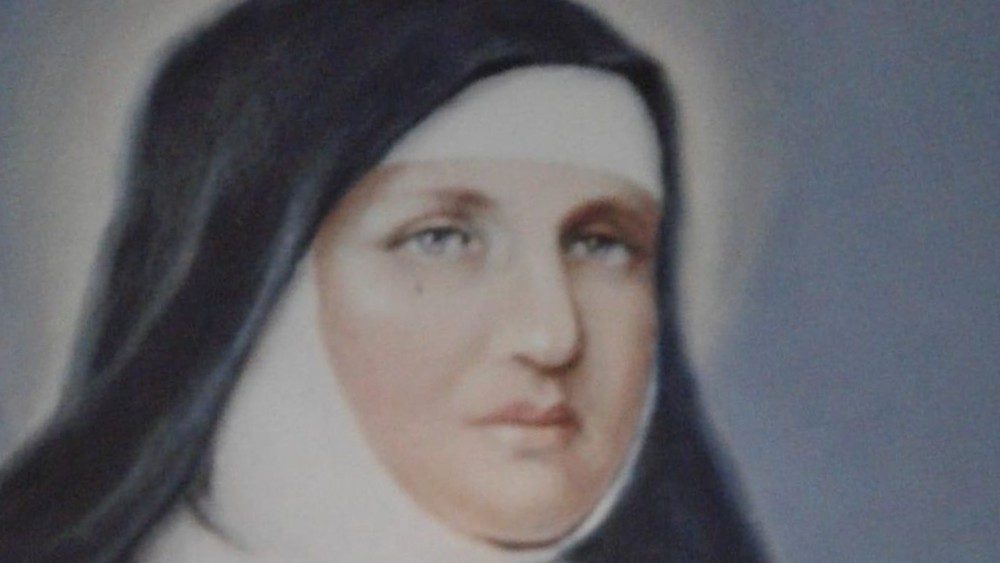St. Maria Francesca Rubatto: A feminine version of modern Franciscanism
By Sebastián Sansón Ferrari
“Be the sisters of the people”, wrote the first saint of Uruguay, Francesca Rubatto (baptized Anna Maria), to the Congregation of Capuchin Sisters.
Born on 14 February 1844 in Carmagnola, Italy, she was canonized by Pope Francis on Sunday, 15 May 2022. This spirit [of service] inspired her life and apostolate in Montevideo, the capital of Uruguay, where she chose to live from 1892 until her death in 1904. In fact, in her final will and testament, she expressed her wish to be buried “in the midst of her dear poor ones”.
A feminine version of modern Franciscanism
The website of the congregation she founded affirms that “she gave Franciscanism a modern feminine version”, and that she is “one of the greatest figures of today’s female Franciscanism”. Precisely “like Saint Francis of Assisi, Mother Frances encountered Christ in the poor and suffering, and had an authentic experience of Lady Poverty”, the website adds. “She was a sister among the Sisters, more than a founding mother, and she lived such a profound missionary zeal and a desire for martyrdom, that accompanied her until the end of her life, consumed by charity and love for Jesus and for the poor”.
Founded on 23 January 1885, the Congregation is present today in Italy, Uruguay, Argentina, Brazil, Peru, Ethiopia, Eritrea, Kenya and Malawi, with schools and parishes where the sisters provide assistance to people most in need.
Close to the poor
Once she had arrived in Uruguay, Saint Frances chose the region of La Teja, Belvedere, Paso de la Arena and Barra de Santa Lucia, which, at the time, was barren land. She would interact with locals, even with workers on their way to the slaughterhouse on Sunday mornings, and catch the train with them at dawn, at 4 a.m.
Among other things, she was able to identify people’s needs for clothing and food, and, with a profound vision, she decided to have a group of her sisters live in the Belvedere neighbourhood, home of the shrine where her remains are kept today.
Mother Rubatto, also accomplished a commendable work of formation and evangelization: she made sure that young girls learned a profession so that they could make a living without having to depend on their families. She taught them to read, write, cook, sew and embroider, but she also offered them religious formation. The workshops Frances started later became large institutes, like San José de la Providencia de Montevideo high school and Saint Francis of Assisi schools in Rosario and Buenos Aires, Argentina.
Openness to God's call
One of Saint Frances’ distinctive traits was her openness to accept God’s call amid the challenges reality presented to her, and to respond to them, Fr Carlo Calloni, Postulator for the Cause of Canonization, told Vatican Radio-Pope.
For instance, when she was 40 years old, they proposed that she lead a project in Loano, in the Diocese of Genoa. It was an unusual invitation according to the human mindset: “A stone fell from some scaffolding, and she helped the construction worker who had been injured, and at the same time, she received the call from a Capuchin, Fr Angelico da Sestri Ponente, who offered her the position of director”, the postulator recalls. After examining the proposal with her spiritual director, Mother Rubatto decided to accept.
Saint Frances and Saint Don Bosco
A less known aspect of Saint Frances was her closeness to Don Bosco. The Salesian family in Uruguay explained the decisive influence on Saint Frances that the “Father and Teacher of the youth” had. According to a publication by the Salesians in Uruguay, the new saint’s life reveals “a strong and decisive relationship with Don Bosco”. She had arrived in Turin in 1862 after losing almost all of her family. She settled in the home of her older sister, who was married, and then went to work for a wealthy countess. “It was at the time that Don Bosco was working with his oratories and she decided to work with him with that discretion, prudence, kindness and tenderness that always characterized her”, they add.
Don Bosco’s prophecies regarding Saint Frances’ mission, the Salesians say, fully came true, and Anna Maria incorporated in her mission various elements of the Preventive System, such as the desire to help abandoned young people, to educate and promote them to give dignity to their lives.
The first Uruguayan saint
Mother Rubatto’s moniker as “the first saint of Uruguay” is inspired by Pope John Paul II, who during her beatification ceremony on 10 October 1993, said: “Today we greet you as the first blessed of Uruguay”.
In his homily, St. John Paul II added: “The Church salutes you, Sister Maria Francesca of Jesus, Foundress of the Third Order of Loano, who made your life a constant service to the lowliest, witnessing to God’s special love for the lowly and the humble. Faithfully following in the footprints of Francis, the lover of evangelical poverty, you learned not only to serve the poor, but to make yourself poor, and you showed your spiritual daughters this special way of evangelization. With the growth of the institute, this initial insight became a deep missionary impulse that brought you and your work to Latin America, where several of your spiritual daughters sealed, with the sacrifice of their lives, that service to the poor which constitutes the charism entrusted to your congregation, for the benefit of the entire Church”.
Thank you for reading our article. You can keep up-to-date by subscribing to our daily newsletter. Just click here












